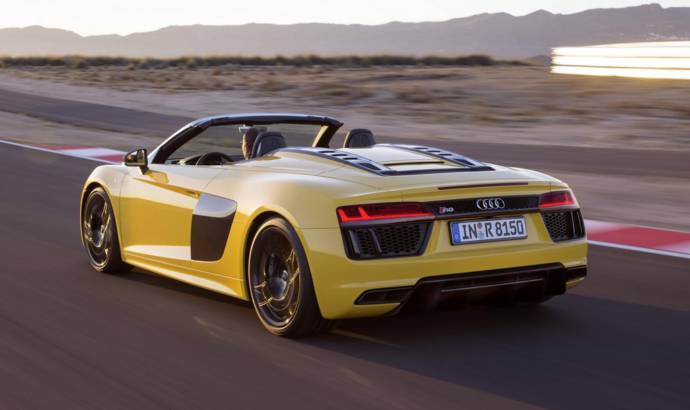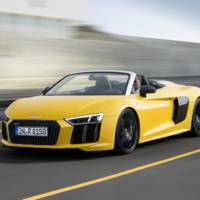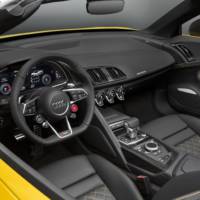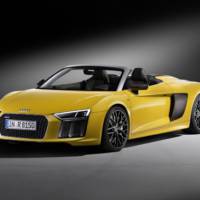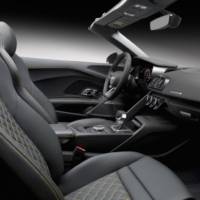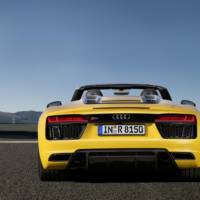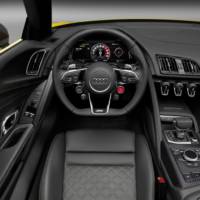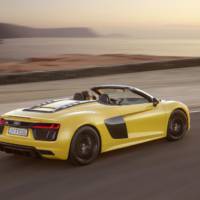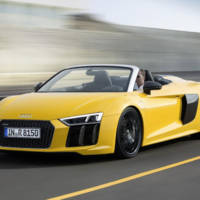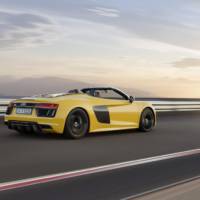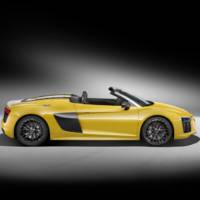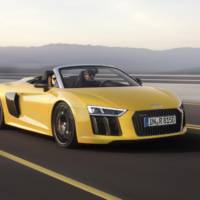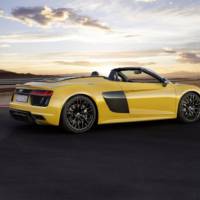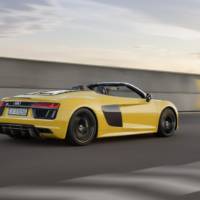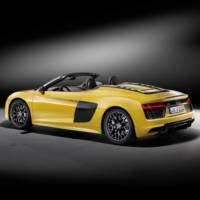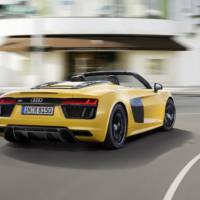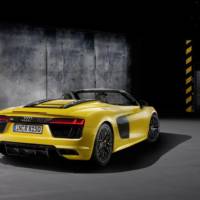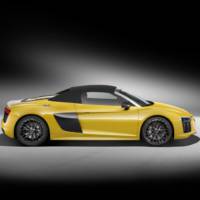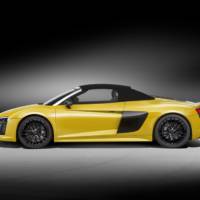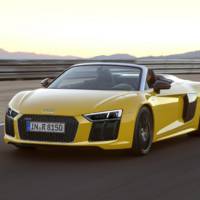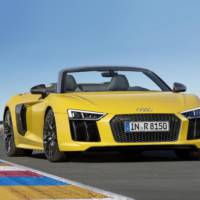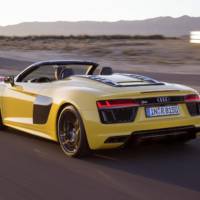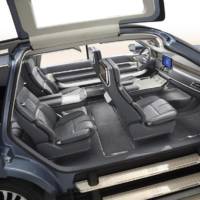After we got used to the current R8 V10 supercar, Audi is introducing its convertible brother. The new Audi R8 V10 Spyder was officially unveiled during New York Auto Show and is ready to reach showrooms by the end of this summer.
The story of Audi in this segment started in 2007 with the market introduction of the first-generation Coupe, followed by the Spyder in 2010. Sales of both versions combined reached nearly 27,000.
The new R8 Spyder is 14 millimeters (0.6 in) shorter than the previous model and measures an overall 4,426 millimeters (14.5 ft) in length. It has grown by 36 millimeters (1.4 in) in width to 1,940 millimeters (6.4 ft). The height of 1,244 millimeters (4.1 ft) is unchanged from the first-generation R8 Spyder, as is the wheelbase of 2,650 millimeters (8.7 ft).
In each headlights there are 37 light-emitting diodes that generate bright LED light as standard. As a high-end option, Audi offers laser lighting. This technology is combined with the dynamic indicator lights. At the rear, it is supplied as standard on all versions.
The newly developed hood of the R8 Spyder is made of cloth. It weighs a mere 44 kilograms, contributing to the low overall weight. An electro-hydraulic drive opens and closes the soft top at the press of a button in just 20 seconds, and this can even be done while driving at speeds up to 50 km/h (31.1 mph). The hood module is located behind the seats. It comprises the components roll-over protection, hood, hood tray, rear-window compartment and a multiple-joint hinge for the carbon fiber reinforced, hydraulically powered hood compartment cover. The hood is available in three different colors: black, brown and red.
Under the hood we have the same V10 engine as seen on the Coupe. From its 5,2 liters displacement, it develops a power of 540 hp and a torque of 540 Nm (398.3 lb-ft) at 6,500 rpm. The new Audi R8 Spyder V10 accelerates from 0 to 100 km/h (62.1 mph) in 3.6 seconds. It races from a standstill to 200 km/h (124.3 mph) in 11.8 seconds. The speedometer needle only stops rising at 318 km/h.
It consumes on average 11.7 liters of fuel per 100 kilometers (20.1 US mpg) which corresponds to 277 grams CO2 per kilometer.

